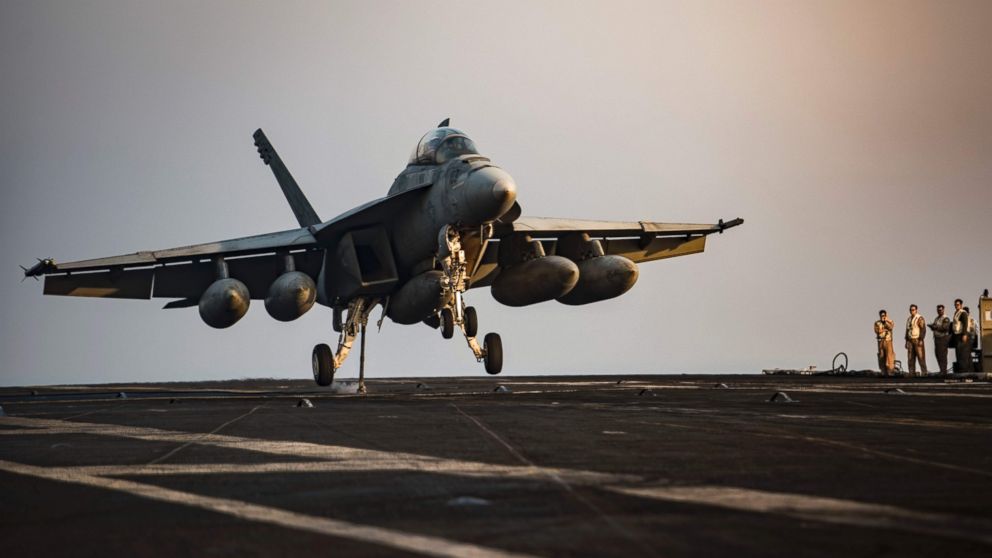Syrian Fighter Jets Fly Over Area Where US Forces Operating for Second Day in a Row
Two incidents may be closest encounter yet between U.S. and Syrian forces.

— -- For the second time in two days, Syrian fighter jets on Friday attempted to fly over a Kurdish-held area of northeastern Syria where U.S. special operations troops are operating, but flew away after being met by American F-22 fighters.
A day earlier, American fighter jets scrambled to meet Syrian jets that conducted airstrikes near the city of Hasakah where American troops are training and advising Kurdish forces that are fighting ISIS.
The two incidents together appear to be the closest military encounter yet between American and Syrian government forces in the two years since U.S. jets began flying over Syria as part of a U.S.-led coalition's fight against ISIS.
Earlier on Friday the Pentagon had warned the regime of Syrian President Bashar Al-Assad to not fly or conduct airstrikes in the area where American troops are operating.
A U.S. official said that on Friday two Syrian Su-24 aircraft once again "attempted to transit the area [near Hasakah] and were met by coalition fighter aircraft." The official said the presence of American F-22 aircraft "encouraged the Syrian aircraft to depart the airspace without further incident. No weapons were fired by the coalition fighters."
Up to 300 U.S. Special Operations forces have been authorized by the White House to operate in northern Syria in support of Kurdish and Arab rebel groups fighting ISIS. They provide training and also serve as advisers on military operations, though the U.S. forces are not directly on the front lines.
The majority of the area around Hasakah is held by Syrian Kurdish forces fighting the Islamic State group, but there are also pockets of Syrian regime forces in the area. Thursday's airstrikes and the attempted flyover by Syrian fighter jets on Friday both occurred in the general area where American special operations forces train and partner with the Kurdish forces against ISIS.
Thursday's encounter occurred as two Syrian fighter jets dropped bombs outside of Hasakah, apparently in support of Syrian regime forces that were fighting the Syrian Kurdish forces.
Syrian pilots did not respond to Kurdish attempts to communicate over an emergency channel during the incident Thursday. Additionally, the U.S.-led coalition contacted the Russian military through a communications link it has for air safety over Syria; the Russians said they did not have aircraft in the area.
American fighter jets were sent to the area where the Syrian jets conducted the airstrikes Thursday, but by the time the U.S. planes arrived the Syrian forces had flown away.
Davis said of Thursday's incident: ‘No coalition forces were impacted.”
"We did make clear that U.S. aircraft would defend troops on the ground if threatened,” he said. “We will ensure their safety.”
"Obviously this is very unusual,” Davis told reporters Friday. “We’ve not seen the regime take this kind of action against YPG before,” he said, using an acronym for Syrian Kurdish forces.
Knowing Russia’s strong support for the regime of Syrian President Assad, Davis said a message was sent for them to pass along to the Syrian military “stating our intent to take whatever action is necessary.”




